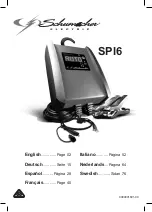
391
Operation
Driving tips
You should brake firmly after driving on a
wet or snow-covered road surface before
stopping the engine, especially if road salts
have been spread. This will heat the brake
discs, thereby drying them more quickly
and protecting them against corrosion.
You should occasionally test the effective-
ness of the brakes if you usually only brake
with moderation. To do so, brake the vehi-
cle from high speed. This will improve the
grip of the brakes.
For safety reasons, Mercedes-Benz recom-
mends that you only have brake pads/
linings fitted that have been approved for
Mercedes-Benz vehicles. Brake pads/
linings which have not been approved for
Mercedes-Benz could affect your vehicle’s
operating safety.
AMG vehicles
The high-performance brake system is de-
signed for high loads. This may lead to
noise when braking. This is dependent on:
speed
braking power
ambient conditions, e.g. temperature
and humidity
The wear and tear on individual brake sys-
tem components, e.g. brake pads/linings
or discs, depends on:
the individual driving style
the operating conditions
No generally applicable mileage can there-
fore be specified. Wear is accordingly high
if an aggressive driving style is employed.
While the vehicle can be fully controlled
at a certain speed on dry roads, you must
reduce your speed on wet or icy roads to
achieve the same road safety.
If ice has formed on the road surface
(e.g. from fog or freezing rain), a light film
of water will rapidly develop on the ice
when you brake, which considerably re-
duces tyre grip. Drive particularly carefully
in such weather conditions.
If water has accumulated on a road surface
to a certain depth, there is a danger of aq-
uaplaning occurring even if you are driving
slowly and your tyres have sufficient tread
depth.
For this reason, do not drive in tyre ruts
and brake carefully.
If you have to drive through water, please
bear in mind that when the vehicle is
raised, the still water depth must not ex-
ceed 25 cm, and that you must drive no
faster than walking pace.
!
Note that vehicles in front or oncoming
vehicles create waves. This may mean that the
maximum permitted water depth is exceeded.
You must observe these notes, otherwise dam-
age may occur to the engine, electrics or trans-
mission.
Tyre grip
Driving on wet roads
Driving on flooded roads
216_RE_2006-12a.book Seite 391 Montag, 2. Oktober 2006 12:06 12
Содержание 2006 CL-Class
Страница 2: ......
Страница 3: ......
Страница 21: ...216_RE_2006 12a book Seite 18 Montag 2 Oktober 2006 12 06 12...
Страница 25: ...4 216_RE_2006 12a book Seite 4 Montag 2 Oktober 2006 12 06 12...
Страница 45: ...24 216_RE_2006 12a book Seite 24 Montag 2 Oktober 2006 12 06 12...
Страница 77: ...56 216_RE_2006 12a book Seite 56 Montag 2 Oktober 2006 12 06 12...
Страница 241: ...220 216_RE_2006 12a book Seite 220 Montag 2 Oktober 2006 12 06 12...
Страница 353: ...332 Controls Air vents Air vents P83 40 3152 31 216_RE_2006 12a book Seite 332 Montag 2 Oktober 2006 12 06 12...
Страница 553: ...532 216_RE_2006 12a book Seite 532 Montag 2 Oktober 2006 12 06 12...
Страница 554: ......
Страница 555: ......
















































